In the technology project »Model-based development of the evaporator periphery«, the components adjacent to the evaporator are adapted so that newly developed evaporators can be profitably used in a heat pump. In order to operate the evaporator of a heat pump efficiently, certain boundary conditions must be met so that icing and defrosting as well as the equal distribution of air and refrigerant function correctly. These include that the air flow is optimally designed, that the refrigerant enters the evaporator in the correct state and that the ice slurry, which is formed in the drip tray during a defrost, can melt efficiently.
more infoProjects and References
-
-

Lärmemissionen von Wärmepumpen.
In the »MENESA« project, the three research institutes Fraunhofer ISE, Fraunhofer IBP and Fraunhofer IWU are working on methods to improve heat pumps with regard to vibrations and noise. The resulting methods allow structural-dynamic and acoustic aspects to be taken into account at an early stage in the development of heat pumps, so that low-noise operation can be achieved in a real operating environment.
more info -
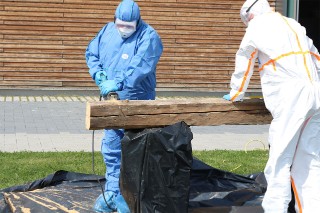
Sawing work on a historic timber beam contaminated with lindane.
The CycloPlasma project combines an innovative adsorbent material and plasma technology to decontaminate wooden structures containing lindane and PCP. The CycloPlasma technique is a revolutionary concept when it comes to renovating and modernizing historical buildings. The method can be applied to all buildings in private and public ownership.
more info -
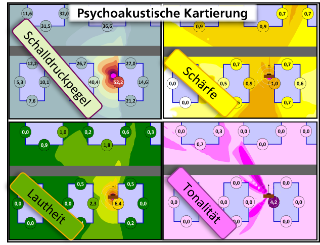
Visualisierung der Kennwerte Schalldruckpegel, Schärfe, Lautheit und Tonalität.
Psychoacoustics help to predict sound immission so that the actually perceived noise load can be mapped with a view to improving noise control.
more info -

Model of Roggersdorf Church.
In the project "Climate for Culture" the influence of climate change on cultural assets in Europe is determined with 27 partners.
more info -

Green roofs increase the proportion of unsealed land in urban areas. Rainwater can seep into them and is stored instead of running off mostly as surface water.
In this project, the existing range of test facilities and simulation options at Fraunhofer IBP are supplemented in order to record rainwater retention capacity of green roofing structures.
more info -

The structure of cattails makes them ideal for use in building materials.
Development and utilization of an innovative organic-based building material made of cattail and geopolymer.
more info -

Individual modular elements.
There is a lack of suitable depots that meet the requirements of sustainability and energy efficiency as well as those of conservation.
more info -

Possible solutions for using a building with wind-powered heating 2.0 with a large hot water storage tank (A), building component activation (B) and a central high-temperature stone storage tank (C).
The aim of the research study is to develop concepts for »Buildings heated by wind-power«, which are heated during periods of strong wind only.
more info -
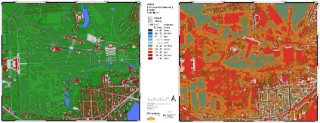
Sanssouci Palace Park - input data for the PALM-4U simulation (left) and simulated heat load on a hot summer's day (right).
Cultural assets are critical socio-cultural infrastructures whose services contribute to Germany's economic development and competitiveness and promote the community. However, the increase in extreme weather events due to climate change poses a threat to these infrastructures, such as historic buildings & gardens and cultural landscapes. The BMBF-SiFo project “KERES” therefore studied future extreme weather events and their effects on our cultural heritage in Germany, and used models to examine these scenarios.
more info -
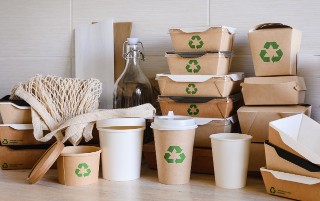
PACFAST enables the carbon footprint / LCA of packaging to be calculated efficiently.
Life cycle assessments are generally relatively complex and, depending on the objective and scope of study, call for a high level of expertise. Our collaboration with Institut cyclos-HTP has resulted in an important milestone on the way to calculating the carbon footprint (CF) of packaging quickly and efficiently. The application, called PACFAST (Packaging Carbon Footprint Fast and Standardised), uses an automatically generated file in CHI-RA that contains relevant packaging specifications for calculating the carbon footprint of the packaging in question.
more info -
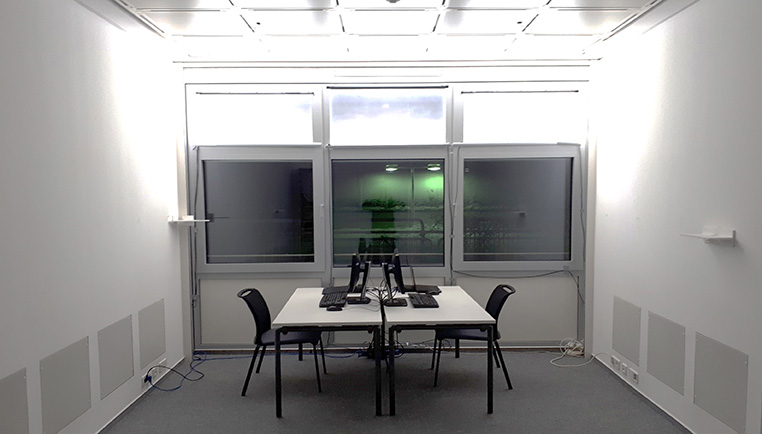
Artificial skylight in twin rooms
The aim of the project is to improve the building energy performance, the life cycle balance and the quality of indoor environments by using micro-structured optical components for daylighting and electrical lighting applications.
more info -

In pursuit of safeguarding the values of the UNESCO World Heritage site of Petra (Jordan) given the challenges of rapid societal and climatic change, the Academy of Conservation and Care for the Environment 2024 (ACCE) aims to foster national and international knowledge exchange among post graduate students and young professionals. ACCE is building a platform for emerging young professionals to come together and participate in workshops at the intersection of natural and cultural heritage environments, by learning from and working with the communities entrusted with their care.
more info -

»Die Schatzkammer« in Petra von oben.
To support the sustainable conservation of the cultural heritage site of Petra, the Fraunhofer IBP together with local stakeholders, is developing a concept for a local education and training program.
more info -

In order to contend with extreme and imminent climate change, and to sustain cultural cohesion in the inhospitable environments that may result, we need to learn how to adapt and live with extremes by embracing climatically appropriate architecture and infrastructure. Combining the sciences and the arts, The Consortium for Climate-Adapted Architectural Heritage forecasts future climates in terms of geographically-based climate analogs – elucidating the future climate of any given location by identifying places that currently have the anticipated climate conditions – helping communities to adapt to climate change through preemptive modification of the built environment.
more info -

Test setup in the HiPIE laboratory in Stuttgart.
The HiPIE laboratory enables the conditioning of the environmental conditions acoustics, lighting, room climate and air quality on a room area of approx. 45 sqm.
more info -

Measurement sample of the prototype, installed in the integrating sphere of the Fraunhofer IBP, to determine the emitted scattered radiation in the UV-A range.
Effective disinfection technologies have been an important topic not only since the Covid-19 pandemic but have increasingly been in the public spotlight since then. The basic idea of this project was to further develop a glass coated with titanium dioxide (TiO2), which generates reactive oxygen species through a photocatalytic process and thus reduces the viral and bacterial load, into a practically applicable transparent virus protection element. Fraunhofer IBP, in collaboration with Fraunhofer IGB and other project partners, has developed a product-oriented prototype that increases this effect through edge coupling UV-A radiation via LEDs and laser microstructuring. The virus protection glass can improve hygiene at sales counters, in kitchens, in refrigerators or in the medical field.
more info -
TaHo - Energy-efficient and cost-efficient daylight lighting using micro-optical building components

Daylight control using new micro-optical structures in the façade/window area and on the ceiling in a classroom of the “Krefeld School” demonstration building.
Micro-optical components for daylight utilization and sun shading can significantly improve energy efficiency, life cycle assessment and quality of life in buildings. A structure for vertical façades has already been pre-developed in dimensions suitable for building applications that directs daylight to areas deep inside a building without glare. This is currently being tested in demonstration buildings. Research is being carried out into new structures for effective sun shading in skylights.
more info -
The adequate consideration of occupant behavior and the intuitive and robust operability of the building services systems are of key importance for energy-efficient building operation.
more info